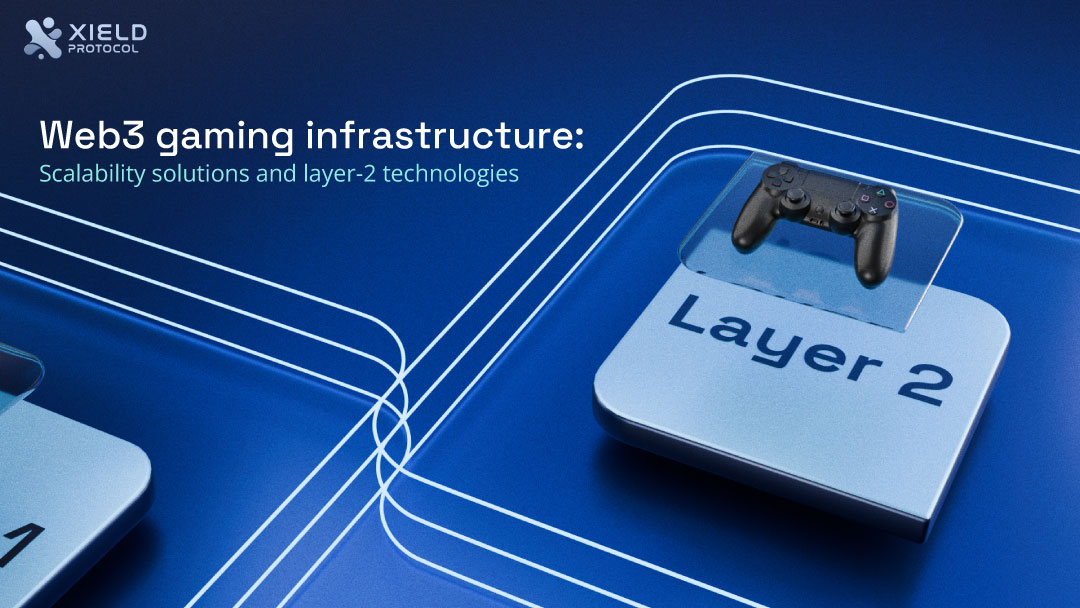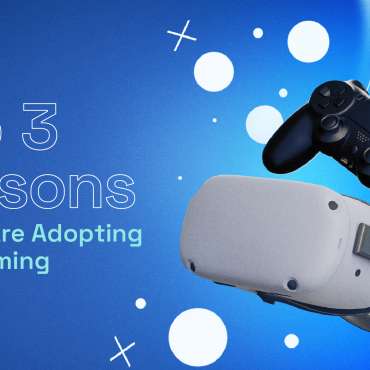Blockchain technology has revolutionized several sectors, including gaming. As blockchain games gain popularity, the importance of efficient scaling becomes clear. Among these advancements, Layer 2 solutions have received a lot of attention for their potential to change the way games run on the blockchain.
Layer 2 solutions present a viable approach to addressing scalability challenges while improving the user experience on Web3 gaming platforms. This article examines why Layer 2 solutions for Web3 gaming are critical and how they are poised to alter the industry.
Current Challenges in Web3 Gaming
Web3 gaming has several problems that limit its growth and adoption:
Scalability Issues
Popular blockchains such as Ethereum can only handle a certain number of transactions per second (TPS), resulting in congestion and slower transaction latency during peak periods.
High Transaction Costs
High gas costs on Layer 1 blockchains can make microtransactions prohibitively costly, a big disadvantage for games that demand frequent, low-value transactions.
Latency
Slow transaction rates can provide a negative user experience, which is especially troublesome in real-time multiplayer games where responsiveness is critical.
Complexity
The intricacy of connecting with blockchain technology can be a hurdle for both creators and players, restricting the widespread adoption of Web3 games.
Scalability Challenge in Blockchain Games
Web3 gaming blends the greatest aspects of traditional video games with monetization, giving players a secure way to own, trade, and earn money to spend on in-game products. This incredible notion has piqued the curiosity of gaming enthusiasts and investors, but for GameFi to truly expand, scalability must be fully addressed.
Scalability is a blockchain network’s ability to handle an increasing number of transactions or users while preserving performance and security. Scalability is essential in gaming to provide quick gameplay, efficient transaction processing, and a consistent user experience.
However, scalability is one of the most challenging aspects of play-to-earn gaming. Popular blockchains like Ethereum have limited capacity, resulting in high transaction fees and long processing times when the network becomes congested. This scaling issue can be a substantial obstacle for games, which rely on rapid, frequent, and low-cost transactions to create a smooth user experience.
How Layer 2 Overcome Scalability Challenge?
Layer 2 are auxiliary frameworks that optimize and scale existing blockchain networks’ capabilities. These solutions seek to alleviate congestion, lower transaction costs, and increase throughput while maintaining the security and decentralized aspects inherent in blockchain technology. In the framework of Web3 games, Layer 2 solutions are critical to offering a smooth and engaging gaming experience.
Prominent Solutions for Scalability by Layer-2 Technologies
Rollups and Sidechains
Layer 2 solutions, like rollups (Optimistic Rollups and ZK-Rollups), state channels, and sidechains, allow for the processing of large volumes of transactions off-chain while retaining the primary blockchain’s security and decentralization. Layer 2 solutions may handle many more transactions per second (TPS) than Layer 1 alone since the majority of transaction processing is moved off-chain. This enhanced bandwidth is crucial for Web3 games, as users frequently engage in many microtransactions.
Reducing Transaction Costs
Another significant advantage of Layer 2 solutions for DeFi gaming is lower transaction costs. High gas costs on Layer 1 blockchains can make tiny transactions prohibitively expensive, which is an issue for games that rely on frequent, low-value transactions like purchasing items within the game or transferring assets. Layer 2 solutions reduce these costs by processing transactions off-chain and only resolving final states on the main chain, resulting in much cheaper fees per transaction.
Improving Speed and User Experience
For Web3 games to compete with traditional games, they must provide a seamless and responsive user experience. Layer 2 solutions may significantly increase transaction speeds, reduce latency, and ensure that in-game activities are handled virtually quickly. This speed boost is critical for keeping players engaged and offering a gaming experience that rivals or exceeds traditional games.
Ensuring Security and Decentralization
One of the most pressing challenges with off-chain solutions is ensuring the security and decentralization that blockchain technology offers. Layer 2 solutions are intended to retain these key qualities. For example, rollups combine many transactions into a single transaction that is subsequently uploaded to the main chain, guaranteeing that the Layer 1 blockchain’s security is inherited. This technique ensures a high level of protection while increasing scalability and efficiency.
Enabling Complex Game Mechanics
Web3 games frequently have complicated interactions and game mechanisms that require several transactions. Layer 2 solutions let these complex systems run smoothly by processing massive transaction volumes off-chain. This functionality enables developers to design more complicated and interesting games while avoiding the constraints of Layer 1 blockchains.
Supporting Cross-chain Interoperability
Many Layer 2 solutions improve cross-chain interoperability, allowing assets and data to flow freely between blockchains. This interoperability is critical for P2E games that want to work across several blockchain ecosystems, giving gamers a more connected and flexible gaming experience. Games may increase their appeal and functionality by integrating features and assets from many chains using Layer 2 technologies.
Improving Sustainable Growth
The environmental effect of blockchain technology, namely the energy consumption related to Proof of Work (PoW) methods, has sparked concern. Layer 2 solutions for Web3 gaming can help to achieve more sustainable growth by minimizing the strain on the main chain, which lowers total energy usage. Because of their efficiency, Layer 2 solutions are an eco-friendly option for developers concerned about their environmental impact.
Real-world Examples of Layer 2 in Web3 Gaming
Several Web3 games have already begun using Layer 2 technologies to improve their platforms and provide better gaming experiences:
Gods Unchained
This popular trading card game employs Immutable X, a Layer 2 protocol, to provide gas-free transactions and rapid trade confirmations. This integration has substantially enhanced the user experience, allowing users to trade cards and participate in the game without being concerned about excessive fees and long transaction times.
Axie Infinity
Axie Infinity‘s integration with the Ronin sidechain has cut transaction costs while increasing transaction speed, resulting in smoother gaming and more frequent transactions. This update has helped Axie Infinity become one of the most popular Web3 games.
Benefits of Layer 2 Solutions for Blockchain Games
Scalability
Layer 2 solutions increase the scalability of blockchain games by lowering the load on the main chain. This leads to speedier transaction processing and a more scalable gaming infrastructure.
Reduced Transaction Costs
High gas prices on the main blockchain might prevent people from participating in blockchain games. Layer 2 solutions reduce transaction costs, making blockchain gaming more affordable and appealing to a larger audience.
Enhanced user experience
Faster transaction confirmations and lower expenses provide for a more smooth and delightful customer experience. Layer 2 solutions provide smoother gaming and more engagement in blockchain games.
Mainstream adoption
Layer 2 solutions are critical to encouraging widespread acceptance of blockchain gaming because they handle scalability challenges and improve the user experience. As these solutions become more widely adopted, the barriers to entry for new consumers will reduce.
The Future Prospects of Layer 2 Solutions in Web3 Gaming
The adoption of Layer 2 solutions is set to unleash the full potential of Web3 gaming, ushering in a new age of decentralized, player-driven experiences. Here are a few ways Layer 2 solutions will influence the future of Web3 gaming:
Enhanced Game Mechanics
With higher scalability and lower costs, developers may integrate more complex and dynamic game features. Games may include complex economies, real-time multiplayer interactions, and sophisticated AI-driven settings without being bound by Layer 1 blockchain constraints.
Ensuring True Ownership and Interoperability
Layer 2 solutions provide actual digital asset ownership, allowing players to purchase, sell, and exchange in-game things easily. This ownership may be extended across many games and platforms owing to cross-chain compatibility. Players might utilize their assets in many games, resulting in a more integrated and varied gaming environment.
Decentralized Governance
Layer 2 solutions can allow decentralized governance models in which players influence game creation and administration. This player-driven strategy can help to build a more engaged and devoted community by giving players a sense of ownership and engagement in the game’s destiny.
Sustainable Growth
Layer 2 solutions help to ensure the long-term growth of Web3 gaming by minimizing the environmental effect of blockchain transactions. By offloading transaction processing from the main chain, Layer 2 solutions reduce total energy usage, making Web3 games more environmentally friendly.
Closing Thoughts
Layer 2 solutions for Web3 Gaming platforms are expected to play an important part in the growth of blockchain-based gaming. Layer 2 solutions help developers build richer, more immersive game experiences by solving crucial challenges like scalability, transaction costs, performance, and security. As technology advances and more projects implement these solutions, the future of Web3 gaming is brighter than ever.
By embracing Layer 2 solutions, developers can realize the full potential of Web3 gaming, creating creative and compelling experiences that capture players and propel the industry forward. The incorporation of these sophisticated technologies will not only improve the present state of Web3 games but will also pave the way for a new age of decentralized, player-centric gameplay.




